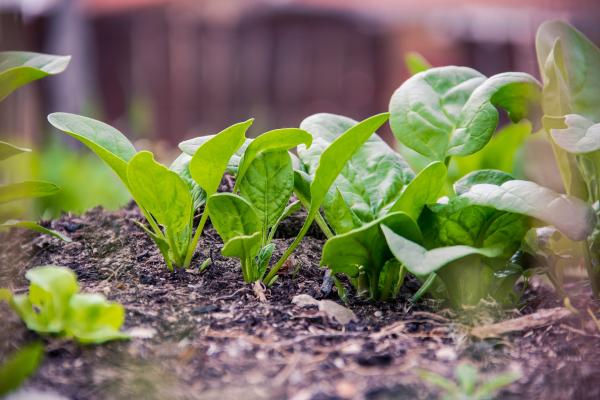On a personal level, it’s Saturday morning. I have things to do other than rebuke the EWG stupidity, such as mowing the yard, hanging out with the grandkids and eating conventionally grown strawberries, painting a bathroom, etc., so I will keep this brief. My reaction and need to respond are comparable to road rage. It's an overwhelming feeling you get and need to respond to when you personally experience the result of someone else’s idiocy.
Here are a few points consumers should be aware of, which should illustrate EWG's agenda, not science-driven, creating warrantless fear and no genuine interest in consumer health.
First: The EWG completely misrepresents the USDA data on pesticide residue. In their March 17, 2021 press release for the Dirty Dozen found here, EWG states, without a reference, that
“nearly 70 percent of the non-organic fresh produce sold in the U.S. contains residues of potentially harmful chemical pesticides.”
As I have written, with citations (!), the California Department of Pesticide Regulation found that 43% of crops tested had no pesticide residue, and at the federal level, no pesticide chemical residues were found in 47.1% of the domestic and 47.2% of the imported samples. (my emphasis)
Second: The EWG paints organics as if they do not have pesticide residues. This is false. There is insufficient reporting of this issue; as I point out here, studies have found that domestic and imported organic samples contain 21% and 55% pesticide residues.
Third: The most egregious issue of all is the misrepresentation of the safety of tools necessary to feed us at a price all income classes can afford. Let me clarify using spinach, the “Dirty Dozen’s” number two item, as my example.
One of the pesticides used to protect spinach is permethrin, which the EWG demonizes. Permethrin is one of three pyrethroid compounds used in agriculture as an insecticide, acting as a neurotoxin to insects who cannot metabolize it as quickly as people.
“They are 2250 times more toxic to insects than humans due to the insect’s smaller size, lower body temperature and more sensitive sodium channels,” and “are considered to be relatively non-toxic to humans in all stages of life,” at the very low dose ranges which we are exposed. [1]
The National Pesticide Information Center (NPIC) points out that “less than 1% of the more than 1,700 food samples tested by the USDA had detectable levels of permethrin.” [2] The most current USDA Pesticide Data Program monitoring for 2017 supported the NPIC. It indicated that of the 3,970 food samples tested by the USDA for permethrin, only 67 samples had any detectable residue. [3] This is 1.6%. Does this appear to be a genuine concern for consumers as the EWG portrays it to be?
Even if you are exposed to this tiny amount of permethrin, your liver rapidly detoxifies it, and it is excreted in your urine, making this minute exposure level a moot point. This is why consuming conventionally grown spinach, which may have happened to have a smidgeon of residue on it, will result in the pesticide’s metabolites in their urine.
But there is more. Just how much spinach could an individual safely consume if it were present to exceed the established safe exposure level of permethrin on spinach? Robert Krieger, Ph.D., authored “Perspective on Pesticide Residues in Fruits and Vegetables” while Director of the Personal Chemical Exposure Program, Department of Entomology, University of California, Riverside. According to his calculations, permethrin safe level of exposure, set by the EPA would allow the safe consumption of
- 3,205 cups of spinach per day for women
- 4,487 for men
- 3,344 cups for teens 12–19 years old
- 2,564 cups for children 2–5 years old
without being harmed by the pesticide.
But wait, but wait, there’s more.
Here is the real irony in this issue. According to the National Institutes of Health, the upper limit of nutritional iron safety is 40mg/day from birth to 18 years old and 45mg after that. Spinach contains roughly 3.75 mg of iron per cup. It would only take 11-cups of spinach to exceed the safe level of iron. At the lowest safety range for permethrin, 2,564-cups, you would die from iron toxicity long before any toxicity from permethrin. Iron is not the only nutrient that would become toxic at those, safe for permethrin, serving levels.
Vitamin B6 has an established upper end of safety of 200mg per day. Anything over this dose for an extended period may result in neurological damage similar to multiple sclerosis. With 0.2mg/ cup of spinach, it takes only 1,000 cups of spinach to achieve the dose necessary to cause neurological damage. Vitamin C is generally considered safe up to 2,000 mg daily. At 9mg of Vitamin C per cup of spinach, you only need 223 cups to exceed the “safe exposure” level. The point here is clear: the “naturally” occurring chemicals in food, even many vitamins, and minerals, would be far more toxic to you than the pesticide used to grow the food.
Is the EWG concern for the pesticide really something to be feared?
[1] Current Research on the Safety of Pyrethroids Used as Insecticides
[2] http://npic.orst.edu/factsheets/PermGen.html
[3] https://ams.ewaps.usda.gov/sites/default/files/media/2017PDPAnnualSummary.pdf p. 121.




